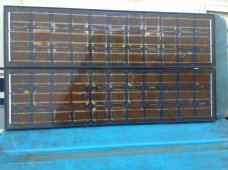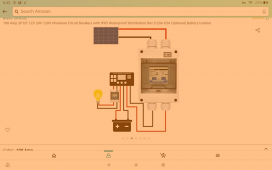If the positive and/or the negative are not grounded. Then, they are required to be switched.
Really,
try telling that to boB Gudgel at Midnight Solar
or maybe Robin Gudgel at Midnight Solar....
or Andy at Midnight Solar
Thanks for your interpertation any way. I have had Midnight Solar since they were introduced...4 systems all with non switched negative....All with Midnight Solar PV combiners which do not switch the negative
2 each Midnight Classic 150’s with Midnight PV-6 combiners with built in AFCI and GFCI
2 each Midnight Kid with shared split Midnight PV-6 combiners with external GFCI and AFCI
All wired exactly as specified by Midnight Solar
All passed by my inspector
Before Midnight was incorporated I had Trace Inverters and Trace PWM controllers , again non switched negative......
Try telling that to Trace...........no negative switching..........Again Robin and boB Gudgel.....
Try telling that to Outback Solar......no negative switching.........Again (founded by) Robin and boB Gudgel
Try telling that to Schneider Electric’s solar division....no negative switching.......Again (original company founded by) Robin and boB Gudgel
In any case you do provide some valuable information and I do appreciate it
I started doing solar in 1966......long before MPPT.....long before PWM..
I powered two way radio sites on mountain tops for industry.....this is “MISSION CRITICAL” infrastructure 24/7/365
law enforcement, fire, muni services, army, air force, US Govt communications, etc.
By the way.......Solar as we use it was developed and patented by the Communications Industry to power communications systems
Surprise...........American Telephone and Telegraph patented the monocrystalline solar panel in early 1950’s to power communications sites
I’m no newbie to Solar.....pic’s below of some panels I installed on Blue Ridge for a repeater system in the ‘60’s
note extremely rare 33 cell “self regulating” panels for use with no controller
I retired from a major American corporation who is huge in electricity........known by two letters...all over the world
Anyway appreciate your input but you are misinterpreting the code




